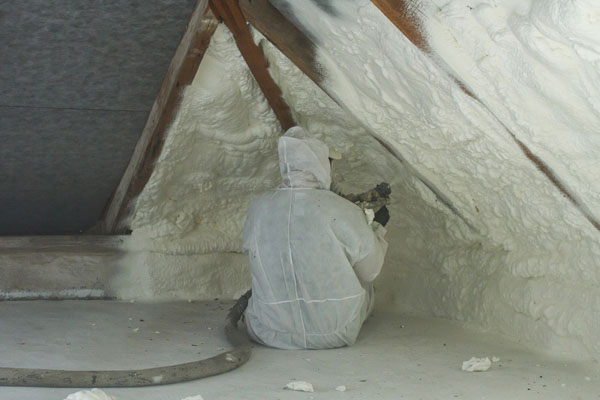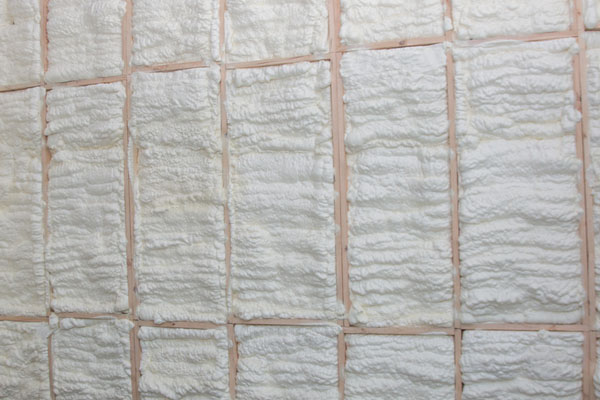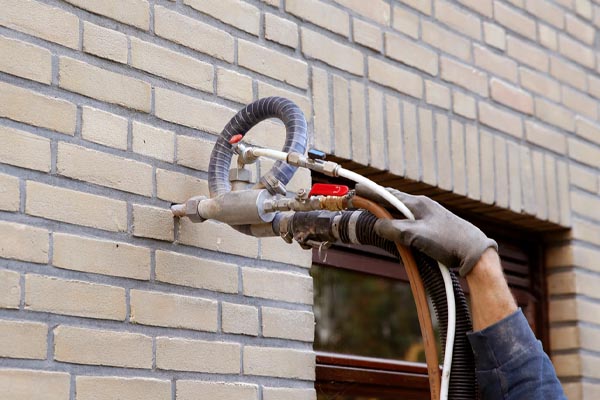Injection Foam Insulation vs. Spray Foam Insulation: What’s the Difference?

Foam insulation comes in different forms, each with unique characteristics and applications. However, homeowners tend to lump them into a single category. This erroneous perception creates confusion among homeowners with improvement projects. In this article, we define the differences between injection foam insulation vs. spray foam insulation.
The Similarities Of Injection Foam Insulation Vs. Spray Foam Insulation In Colorado
Contents
Consumers use “injection foam” and “spray foam” interchangeably because of comparable performance. These insulators are equally capable of establishing an air seal in your home. The seals prevent conditioned air from escaping to the outdoors, reducing the burden on the HVAC system. Furnaces and air conditioners don’t need to work for extended periods once the air leaks are gone.
These insulators also block cold drafts to maintain a uniform temperature throughout the home. Your family will feel more comfortable no matter the weather. Households can save up to 20% on energy bills thanks to air sealing. This significant amount justifies the additional insulation.
The Differences Between Injection Foam Insulation & Spray Foam Insulation
Now we move to the stark differences between injection and spray foam insulation. The list below should prevent further confusion by highlighting clear divergences. It should also aid consumers in planning a renovation. Those who have specific questions may discuss them with insulation experts, like Ascend Construction.
Related Article: The Importance Of Home Air Sealing On Energy Costs In Colorado
Installation Process Of Foam Insulation In Fort Collins, Colorado

Professional installers prepare the injection foam by mixing resin with water and a foaming agent. They blend the ingredients until they achieve a creamy consistency. It cannot be too thick or too runny, as these extremes will prevent it from settling as it should inside the hidden spaces. The crew can work with any siding, making it a more versatile insulation than spray foam. Once they drill the entry holes, they can inject the foam. They plug the holes and replace the siding. Lastly, the installers clean all traces of the operation.
Spray foam installation takes a while longer. Obstacles must move out of the way, including furniture and appliances. Plastic covers any remaining items in the room to protect them from the spray. Installers combine two liquids to trigger a chemical reaction that creates the polyurethane foam. They stay in separate containers until the right moment when they move to a small chamber before release. The crew must remove old insulation and clean the surfaces to facilitate adhesion. It also allows the spray foam to fill every crevice and prevent air leaks.
Expansion Rate Of Spray Foam & Injection Foam
Injection foam does not expand. It maintains its volume throughout the installation process. Thus, the amount of material you need is highly predictable. The crew injects just enough of the insulator to fill the cavities.
Spray foam is not as simple as the injected variety. It comes in two forms: open and closed cell foams. They expand at different rates. The open-cell material can expand up to a hundred times its initial volume, ensuring that even a thin layer can fill a massive space and seal all cracks. The downside of this insulation is that it provides more gaps for moisture to settle, though it will not rot despite long exposures.
Closed-cell spray foam expands, but not by much. It is a denser insulating material compared to the open-cell variant. Despite this difference, it can still provide adequate air sealing for energy efficiency. It also repels moisture more readily thanks to its closed structure.
Related Article: What Are The Pros And Cons Of Spray Foam Insulation?
Applicable Situations Of The Two Types Of Foam Insulating Materials In Colorado

Injection foam is suitable for enclosed spaces. Use it to fill the empty cavities of your existing walls. The soft material is perfect for homeowners who want minimal disruption. It does not require drywall teardown. You can install it from the inside or the outside. Just punch a small hole through which to inject the liquid foam. It has the consistency of shaving cream, allowing it to take the shape of its container and move around obstacles. Fiberglass insulation inside the walls may stay, but cellulose requires removal before injection. The extra step ensures optimum coverage of all interior spaces.
Spray foam, on the other hand, is geared toward open spaces. It is ideal for new construction as installers have full access to wall cavities. It can also cover the surfaces of attics, rim joists, and crawl spaces. This spray gun blasts the hot liquid foam directly onto the target. There can be no obstacles in the way in this scenario. The area must be completely accessible. In contrast, injection foam goes inside a hole and fills the volume as more material enters. The existing walls are essential in holding the foam and preventing it from spilling outside.
R-Values Of Spray Foam & Injection Foam In Fort Collins, CO
If you look at the numbers, injection foam can offer a superior R-value. The total can reach up to R-18 once firmly inside a wall cavity. However, the figure varies depending on the thickness of the containers.
As for spray foam, closed-cell insulation provides a higher R-value per inch than open-cell options. The ratio is roughly 2:1, with values of R-7 to R-3.6, respectively. The dense material has better resistance to heat flow, making it a good choice for areas that experience extreme cold. However, the excellent insulation performance also comes at a higher price.
Homeowners who want decent performance at a lower price may choose open-cell foam. It has most of the benefits of closed-cell foam without breaking the bank. It even has better sound-dampening capacity. If you live in a noisy neighborhood, this material will help you reduce the irritants.
Related Article: How Does Insulation Affect Heat Loss?
Conclusion
Foam is an effective insulator. However, you need to pick the right kind for each job. Injection foam is suitable for existing walls with hollow cavities. You can fill these spaces with minimal effort. On the other hand, spray foam is better for new walls with open spaces. It adheres and expands to seal all surfaces. Remember their differences and install the appropriate material with the help of insulation experts.
Related Article: How Is R Value Calculated?
Injection Foam Insulation vs. Spray Foam Insulation In Fort Collins
If you are considering air sealing or upgrading your home’s insulation, it is best to seek professional guidance. However, not all professionals offer the same level of quality and pricing. Always make sure you work with the best professionals available in your area. Fortunately, residents of Fort Collins and nearby areas can turn to Ascend Construction for top-notch service.
At Ascend Construction, we specialize in insulation removal and installation, air sealing, energy conservation, energy audits, whole-house fan installations, and more. We’re confident that our service stands out from the rest.

For a free consultation with our experts, get in touch with Ascend Construction today. Our team can offer practical solutions to address any problem areas in your Fort Collins home. We guarantee affordable pricing and high-quality work. Click here to contact us, or call us using the button below. We offer free, no-obligation, in-home consultations.
Ascend Construction
301 S Howes St #1241
Fort Collins, CO, 80521